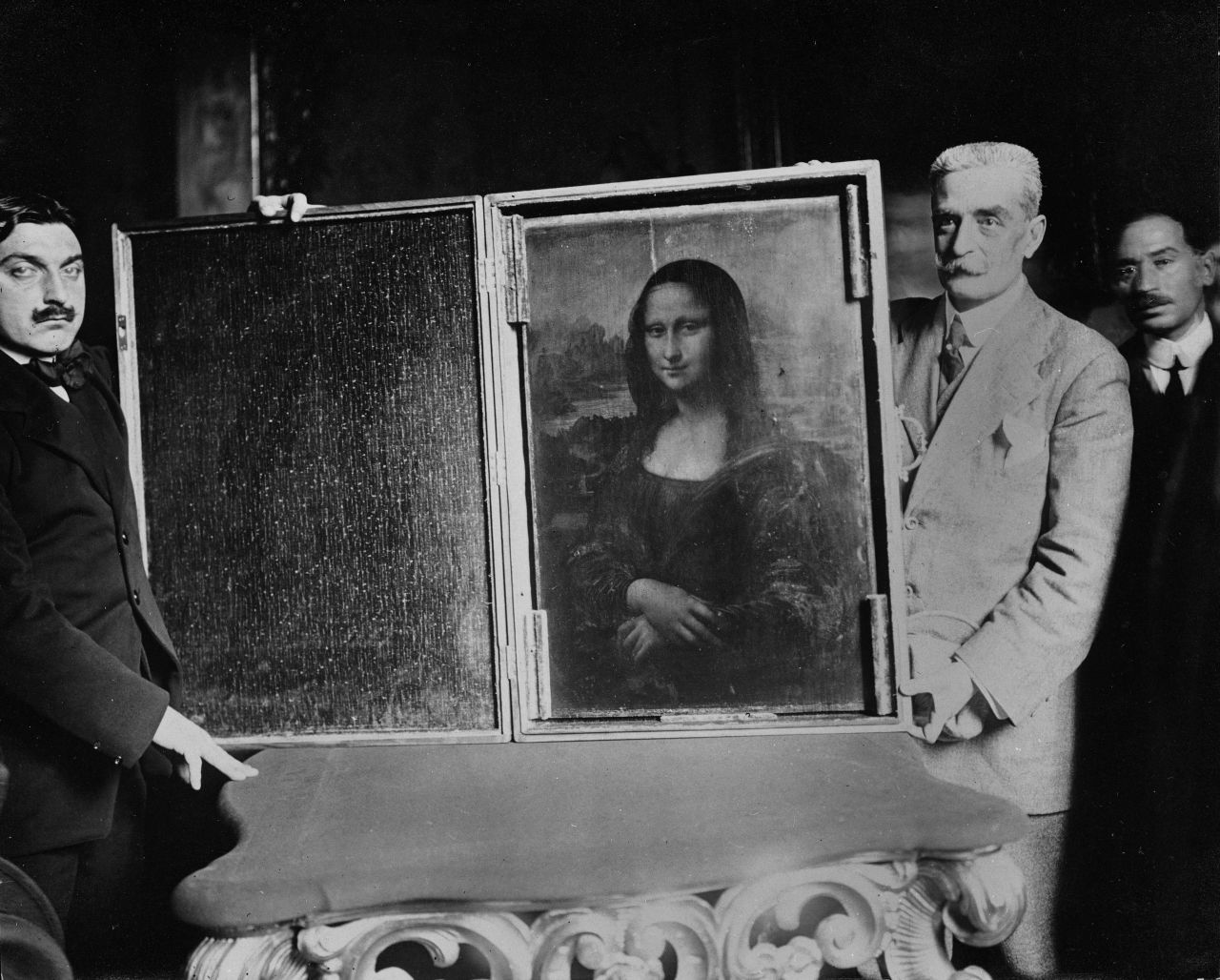
The greatest theft in the history of art
Did you know that the Mona Lisa, the famous painting by Leonardo da Vinci, was stolen from the Louvre Museum in 1911? In this article we tell you the incredible story of this theft that shocked the world and gave rise to all kinds of theories and suspicions.
How the Mona Lisa was stolen
On August 21, 1911, a Monday morning, the Louvre Museum was closed to the public. A man dressed in a workman's uniform entered the building and went to the room where the Mona Lisa was exhibited. There, he unhooked the painting from the wall, wrapped it in a cloth and hid it under his clothes. He then quietly left through a back door and walked away with the loot.
The theft was not discovered until the next day, when a visitor noticed that the space where the Mona Lisa should have been was empty. The alarm was immediately raised and a police investigation was launched that would last two years. The Louvre Museum was closed for a week and all staff and possible witnesses were questioned. Among the suspects were the poet Guillaume Apollinaire and the painter Pablo Picasso, who were arrested and later released for lack of evidence.

The identity of the Mona Lisa's thief
Meanwhile, the thief, whose identity was unknown, kept the painting in his room in a Paris hotel. He was Vincenzo Peruggia, an Italian carpenter who had worked at the Louvre Museum and who had participated in the installation of the paintings' protective frames. Peruggia acted alone and for patriotic reasons: he wanted to return the Mona Lisa to Italy, his country of origin, as he believed it had been stolen by Napoleon.
Peruggia waited two years before attempting to sell the painting. In 1913, he contacted an antique dealer in Florence named Alfredo Geri and offered him the Mona Lisa for 500,000 lire. Geri agreed to see the painting and met Peruggia at a hotel. There, he was able to verify that it was the original and alerted the police. Peruggia was arrested and confessed his crime. The Mona Lisa was recovered and returned to the Louvre Museum in 1914.

The theft of the Mona Lisa had great media and cultural repercussions. On the one hand, it increased the fame and value of the painting, which became a universal symbol of art. On the other hand, it inspired numerous literary, cinematographic and artistic works that recreated or parodied the historical event. Some examples are the novels The Thief of the Gioconda by Agatha Christie or The Da Vinci Code by Dan Brown, the films La Gioconda está triste by Fernando Fernán Gómez or La banda Picasso by Fernando Colomo, or the paintings Dora Maar with cat by Picasso or L.H.O.O.Q. by Marcel Duchamp.
We hope you liked this article about the theft of the Mona Lisa and that you have learned something new about this fascinating episode in the history of art. If you want to know more about the Mona Lisa or other masterpieces of the Louvre Museum, we invite you to visit our website or follow us on our social networks, like Twitter, Facebook and Instagram.
And, if you want to know other facts about the Louvre Museum and get information about the greatest works of art such as the Mona Lisa housed in the main museum of Paris and France, we recommend "The Louvre Art Guide" now available on Amazon by clicking here.
